Have you ever heard someone say that God is intersexual or both male and female? Maybe you’ve heard people say that God is neither male nor female but transcends gender. You might have even heard someone say that God is a woman because ancient people worshiped the mother goddess. They claim it wasn’t until around 1500 BC when patrilineal societies came into power with male gods.
Is there any truth in any of this? What does our source of truth – the Bible – tell us about God’s gender?
What gender is God in Christianity?
Well, how did Jesus refer to Himself? When God came to earth as a human, was Jesus a man or a woman? He called Himself “Son of Man” (Matthew 24:30, Mark 14:21, Luke 9:26, etc.).
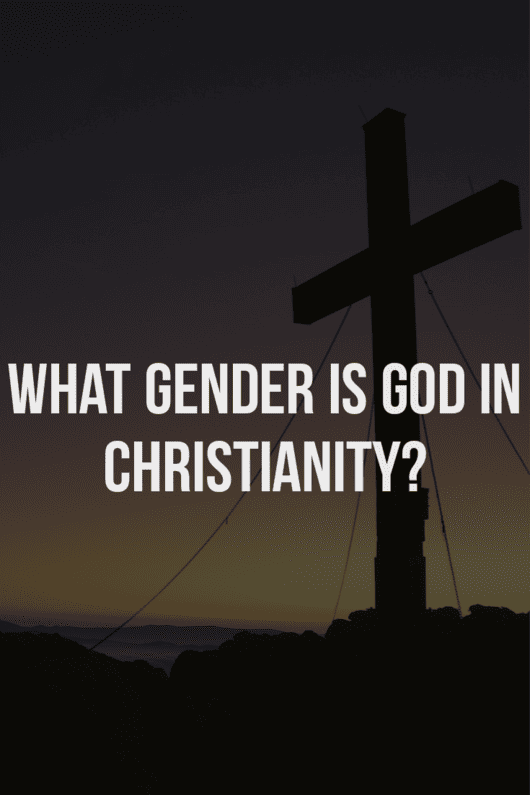
How did Jesus refer to God? Did He call God mother? No! He constantly referred to God as His Father. Jesus spoke of the temple as “my Father’s house” (Luke 2:49). Jesus told the people to “be merciful as your Father is merciful” (Luke 6:36). Jesus taught us to pray to “our Father in heaven.”
When John had his vision of Jesus in Revelation, he described Him as “like a son of man” (1:16). Revelation repeatedly refers to Jesus as the “Lamb.” Jesus was the ultimate Passover Lamb, and that lamb had to be male (Exodus 12:5).
How do we know God is male?
God is spirit, but when He appeared in personified form, as when He came to Abraham, He came as a man. The two angels accompanying Him also appeared as human men (Genesis 18 & 19). He revealed Himself to Jacob as a man and wrestled with him (Genesis 32:24-30). He appeared to Joshua as a man, the Commander of the Lord’s Armies, and Joshua worshiped Him (Joshua 5:13-15).
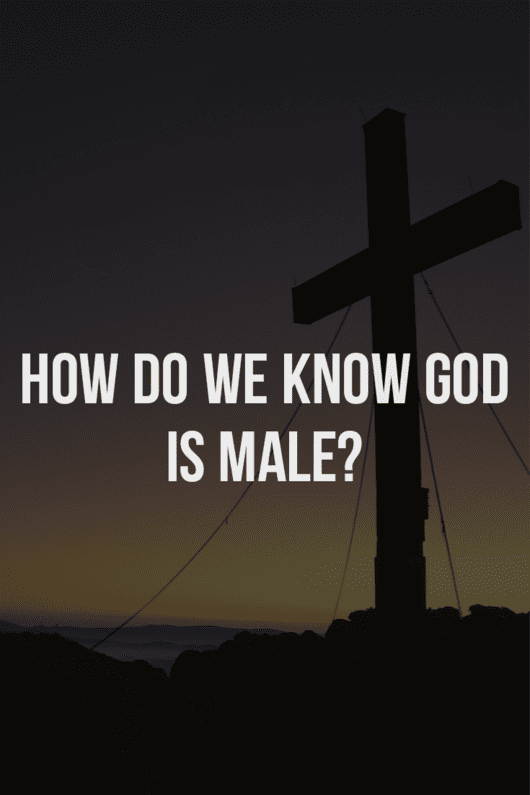
God chose to reveal Himself to us in masculine terms, using words like Father, Son, and Husband.
In the Old Testament, God referred to Himself as the Father of the fatherless (Psalm 68:5), the Father of David (2 Samuel 7:14; 1 Chronicles 17:13), and the Father of Israel (Deuteronomy 1:31, 8:5, 32:6). Isaiah referred to God as “our Father” (Isaiah 63:17, 64:8), and so did Jeremiah (3:19, 31:9).
The New Testament frequently references God as Father, not only of Jesus but of us who believe in Him.
- “If you then, being evil, know how to give good gifts to your children, how much more will your heavenly Father give the Holy Spirit to those who ask Him?” (Luke 11:13)
- “God has sent the Spirit of His Son into our hearts, crying out, ‘Abba! Father!’” (Galatians 4:6)
God refers to Himself as husband and to Jesus Christ as the husband of the church, His bride.
- “For your Maker is your husband, the Lord of hosts is His name; and the Holy One of Israel is your Redeemer, the God of the whole earth He is called.” (Isaiah 54:5)
- “For I am jealous for you with a godly jealousy; for I betrothed you to one husband, to present you as a pure virgin to Christ.” (2 Corinthians 11:2)
While God does refer to Himself as having motherly traits (Isaiah 66:13, Matthew 23:37), He never refers to Himself as mother, daughter, or wife.
The Person of Jesus Christ

The angel Gabriel announced Jesus’ birth to Mary, “You will conceive in your womb and give birth to a son, and you shall name Him Jesus. He will be great and will be called the Son of the Most High” (Luke 1:31-32).
Why did Jesus need to be a man instead of a woman? He was “the last Adam.” The first Adam brought sin, condemnation, and death into the world: the last Adam brought salvation, forgiveness, and life:
- “For since by a man death came, by a man also came the resurrection of the dead. For as in Adam all die, so also in Christ all will be made alive.” (1 Corinthians 15:21-22)
- “So it is written: ‘The first man Adam became a living being;’ the last Adam a life-giving spirit.” (1 Corinthians 15:45)
“Wait a minute,” you might be thinking. Didn’t Eve eat the forbidden fruit first? Yes, Eve did sin first. However, Adam himself said that Eve was “bone of my bones, and flesh of my flesh (Genesis 2:23). God said they were “one flesh” (Genesis 2:24). God commanded Adam not to eat from the Tree of the Knowledge of Good and Evil before He created Eve (Genesis 2:16-17), although, of course, Eve knew about the command.
Adam wasn’t over on the other side of the garden when the serpent showed up. Adam was with Eve when the serpent tempted his wife (Genesis 3:6), and he did not intervene. He listened to the devil’s lies and didn’t shut him up. He watched his wife reach up and take the forbidden fruit, and he didn’t stop her. Eve, the serpent, and Adam all received individual punishments (passed on to their descendants) for their roles in the Fall of Man.
But God ultimately held Adam responsible because the male – the husband – is the authority in the marriage relationship.
- “For the husband is the head of the wife as Christ is the head of the church, His body, of which He is the Savior.” (Ephesians 5:23)
The serpent deceived Eve, but Adam was not deceived, yet he chose to sin anyway. (1 Timothy 2:12-14)
Thus, Jesus did not come as the “second Eve” but the “second Adam.” The Passover lamb had to be a male because it foreshadows what the “last Adam” would do.
In what religion is God a woman?
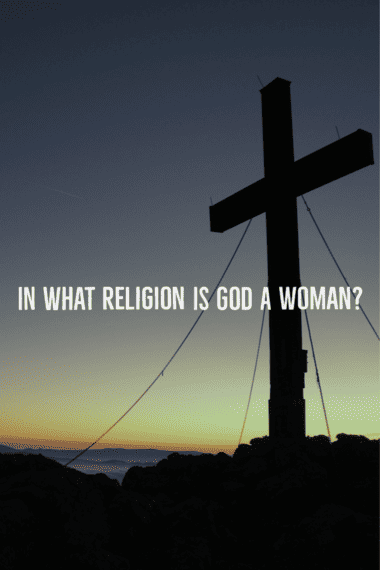
First, let’s put to rest the silly notion that people worshiped “the goddess” before patrilineal societies adopted male gods. Eridu is believed to be the world’s oldest city (its ruins are in southern Iraq), and it was polytheistic, with the male god Enki as its primary god.
When Abraham and his family lived in Ur (several miles away from Eridu), the people were polytheistic, worshiping multiple gods. Most of their gods were male, but one important deity was Inanna, daughter of the moon god, and the goddess of sex and war. She was called Ishtar in Assyria and northern Mesopotamia. When she didn’t get her way, she repeatedly threatened to tear down the gates of the underworld and release the zombies.
The ancient Egyptians had male and female deities. One was Bastet, the war goddess, often depicted with a cat’s head and a woman’s body. The Persians used the Egyptians’ reverence for Bastet (and cats) to their advantage in 525 BC. They rounded up a bunch of cats and released them on their front lines. This panicked the Egyptians, who didn’t want to offend their goddess by possibly killing a cat with their catapults and arrows. They abandoned the battlefield, with the Persians in hot pursuit.
The Greek religion was also polytheistic, with both male and female deities. One female deity was Artemis, goddess of the moon and the hunt. We read about this goddess in Acts 19, when the apostle Paul preached in Ephesus for two years. God gave Paul the power to perform unusual miracles, many people were healed of diseases, and evil spirits were expelled. The Gospel spread like wildfire, and people brought their witchcraft books, burning several million dollars’ worth of demonic incantations. Artemis was the patron goddess of Ephesus, but so many people were turning to Christ that the silversmiths who sold idols of Artemis were losing business. So, they stirred up a riot, screaming, “Great is Artemis of the Ephesians!”
Several religions today still worship women as one of their gods. The heretical World Mission Society Church of God – a Korean “Christian” cult – believes in God the Father and God the Mother. No major monotheistic (one-god) religions have a woman god, although Hinduism has several goddesses like Mai or Shakti that some sects worship as the primary or only deity. Filianism is an obscure religion of the mother/daughter god that started in the 1960s, with roots in Hindu thought. Buddhists in southern China are more likely to worship the female Guanyin (an avatar of Buddha) than Buddha.
The Hindu religion has multiple gods and goddesses, including Kali, the blue-skinned goddess of power, anger, and destruction. Like other female Hindu goddesses, she is often portrayed with four arms – sometimes ten! She wears a necklace of skulls, her eyes are red with rage, and in her multiple hands, she holds knives and the gory head of a man. Periyachi is another gruesome Hindu goddess who acted as a midwife to a mythological queen. After the baby was born, Periyachi ripped out the queen’s stomach and ate her intestines.
Why is God a woman in the Shack?

The movie The Shack is based on William Young’s novel about a distraught father whose daughter was murdered. Four years after her death, the father visits the shack where his daughter was brutally killed. He finds a “Trinity” of Jesus, a Middle-Eastern carpenter, the Holy Spirit as a thin Asian woman gardener, and “Papa” God as a heavy-set black woman.
In real life, the author, William Young, was in the ministry, and cheated on his wife with her best friend. When the church found out about his three-month affair, the elders dismissed him from the ministry. Several weeks later, the church’s worship leader pulled into his driveway. She was a full-figured African-American. She told Young that she thought it was wrong of the church to ask him to leave. She said she didn’t care what the others did, she was going to be his friend.
To Young, this was God revealing Himself in the form of a woman. What Young and the movie attempted to do was display the black woman as a manifestation of God’s unconditional love. He said, “The paternalistic mindset that a man can reveal God to the world better than a woman can is a mistake, and part of the book is meant to undermine that.”[i]
Why did God make male and female?
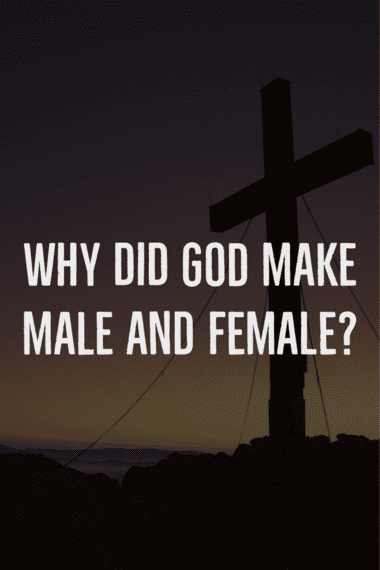
God gives the answer to that question in Genesis 2:18. After creating Adam, the first man, God said, “It is not good for the man to be alone; I will make him a helper suitable for him.”
The word translated “suitable” is neged and carries the idea of being complementary (not to be confused with complimentary). Complementary means that each person’s differences enhances the other’s qualities. When the two different people are brought together, they form a complete whole. Where one is weaker, the other is stronger.
God wanted a perfect fit for Adam. He didn’t create another man for Adam; He created a woman as the consummate counterpart. Together, as one flesh, each fulfilled and completed the other.
Is the Bible sexist?

Absolutely not! God created both Adam and Eve in His image (Genesis 1:27). Eve wasn’t created as a lower life form. God recognized that Adam was incomplete. He created Eve from Adam’s rib – from his side, corresponding to him. The Hebrew word translated “helper” in Genesis 2:18 is ezer. It’s the same word that refers to God as Helper in Exodus 18:4, 26, 29, and Psalm 20:2, 33:20, 70:5, 115:9-11, 121:1-2, 124:8.
Jesus made a point of including women in His ministry, such as Mary Magdalene, Joanna, and Mary the mother of James. After His resurrection, these women saw the angels that the male disciples did not see (Luke 24:1-10). Jesus revealed Himself to Mary Magdalene first (John 20:11-18).
The church is the bride of Christ. The Bible speaks of God’s great love for the church as the example of how the husband should sacrificially cherish his wife:
“Husbands, love your wives, just as Christ also loved the church and gave Himself up for her, so that He might sanctify her, having cleansed her by the washing of water with the word, that He might present to Himself the church in all her glory, having no spot or wrinkle or any such thing; but that she would be holy and blameless.
So husbands also ought to love their own wives as their own bodies. He who loves his own wife loves himself; for no one ever hated his own flesh, but nourishes and cherishes it, just as Christ also does the church, because we are parts of His body.” (Ephesians 5:25-30)
How the Bible describes God
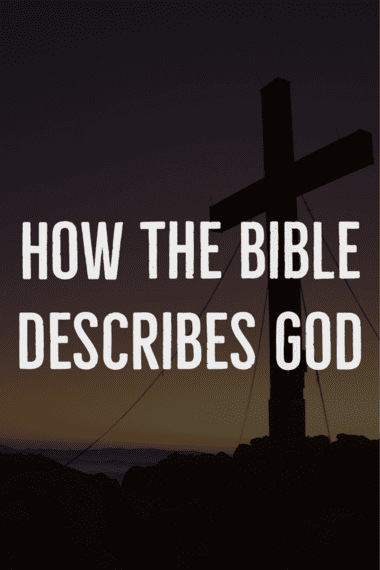
Several years ago, a Hebrew rabbi wrote an opinion piece, “Is God Transgender” in the New York Times claiming that God’s gender is elastic or gender-fluid or dual-gender.[ii] He said that the name of God – YHWH or YHVH (Yahweh) – really means “He-She.” Of course, it was all utter nonsense, with no support from Jewish or Christian scholars of Hebrew. It was an awkward attempt to reframe God in the context of modern-day gender perversion.
YHWH was the name God used when He introduced Himself to Moses in Genesis 3. It carries the idea of the “existing One who brings existence.” God clarified this in Genesis 3:14, when He said, “I am who I am.” The Hebrew transliteration for “I am” is hayah, which means “to be” or “come to pass.” This is the word used when God said, “Let there be light” (Genesis 1:3). YHWH carries the concept of existence – not gender.
Some people refuse to use male pronouns for God, insisting that to do so reflects our patriarchal mindset. But God refers to Himself repeatedly as Father, through creation and through election. When He appeared in bodily form, it was as a male. The Bible consistently uses masculine language – male nouns, pronouns, and verbs – to describe God’s actions, character, and nature.
Conclusion
No, God is not a woman! He is not our “mother-god.” God makes it clear in the Old and New Testaments that He wants us to relate to Him as Father. Jesus was God incarnated as a man, and He said, “The Father and I are one” (John 10:30). Shouldn’t we honor the way God chose to reveal Himself to us?
The fact that God reveals Himself as male does not diminish women. We – the church – are the bride of Christ! The Ephesians 5 passage above repeatedly uses feminine pronouns and nouns to refer to the church. Jesus sacrificed Himself for her, He sanctified her, so that she would be holy and blameless.
We can’t twist who God is to fit into society’s constantly changing perspectives of gender. Instead, we should look to God for His perspective of gender.
[i] https://www.themorningsun.com/2017/02/28/faith-why-god-is-a-black-woman-in-shack-some-christians-call-it-heresy/
[ii] https://www.nytimes.com/2016/08/13/opinion/is-god-transgender.html?_r=1

